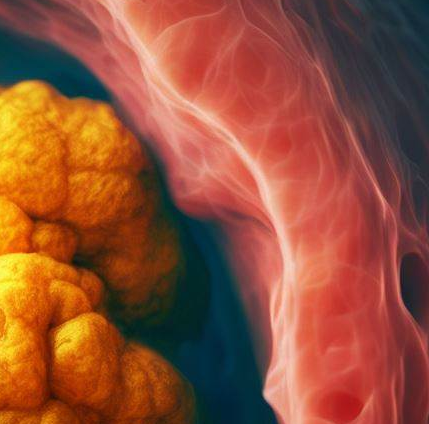Read about Left & Right Atrial Myxoma Symptoms, Causes, Surgery, ICD-10.
Atrial myxoma is an uncommon but significant condition that affects the atria of the heart. Atrial myxoma is the term used to describe the growth of benign tumors inside the atrial chambers, which can lead to a number of symptoms and complications.
What is Atrial Myxoma?
Atrial myxoma is characterized by the development of benign tumors called myxomas inside the heart's atrial chambers. The interatrial septum, which divides the left and right atria, is the typical site of origin for these tumors. Atrial myxomas consist of connective tissue cells and dispersed blood vessels and are frequently gelatinous or mucoid in appearance.
Atrial myxoma is uncommon, accounting for about half of all primary cardiac tumors. While it can affect people of any age, it is most common in adults aged 30 to 60. Both the left and the right atria can develop atrial myxomas, and each one has its own set of symptoms and traits.

Left Atrial Myxoma
Myxomas of the left atrium frequently clog the mitral valve, which controls blood flow between the left atrium and the left ventricle. This blockage can cause a variety of symptoms, including:
- Dyspnea (shortness of breath)
- Fatigue and weakness
- Chest pain
- Palpitations or irregular heartbeat
- Dizziness or fainting
- Pulmonary edema (fluid accumulation in the lungs)
- Embolic events (clots traveling to other parts of the body)
Each person will experience these symptoms differently in terms of their degree and expression, but they are typically brought on by disruptions in the normal heartbeat and blood flow.
Right Atrial Myxoma
Right atrial myxomas, unlike left atrial myxomas, tend to impede the tricuspid valve, which controls blood flow between the right atrium and the right ventricle. Right atrial myxoma symptoms include the following:
- Peripheral edema (swelling in the extremities)
- Jugular venous distention (visible bulging of neck veins)
- Hepatomegaly (enlarged liver)
- Ascites (abdominal swelling due to fluid accumulation)
- Fatigue and weakness
- Shortness of breath during exertion
- Arrhythmias (abnormal heart rhythms)
Atrial Myxoma Causes
The precise causes of atrial myxoma are still unknown. However, some contributors and connections have been established. A genetic predisposition is thought to play a role, as a tiny percentage of cases exhibit familial inheritance. Furthermore, research has shown a possible connection between atrial myxoma and hereditary disorders such Carney complex and familial cardiac myxoma syndrome.
Atrial Myxoma Diagnosis
The patient's medical history, physical exam, and numerous diagnostic procedures are all thoroughly examined in order to determine the patient's diagnosis of atrial myxoma. A useful method for observing and assessing the characteristics of atrial myxomas is echocardiography, particularly transesophageal echocardiography (TEE).
Surgical Intervention for Atrial Myxoma
Atrial myxoma surgery aims to completely remove the tumor while maintaining the health and functionality of the affected atrial chamber. Depending on the location, size, and features of the tumor, the surgical strategy may change. Scarring can be reduced and patient recovery can be improved by using minimally invasive procedures like robotic-assisted surgery.
Atrial Myxoma ICD-10
Atrial myxoma is a type of benign neoplasm that can occur in the heart. The ICD-10-CM code for atrial myxoma is D15.1, which falls under the category of "Benign neoplasm of heart".










0 Comments